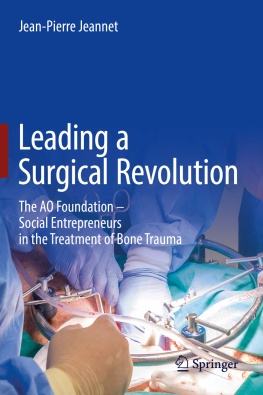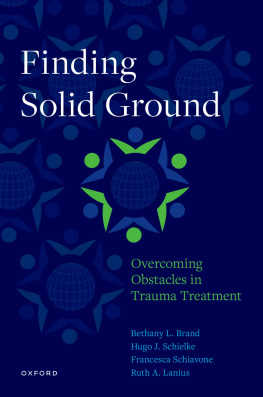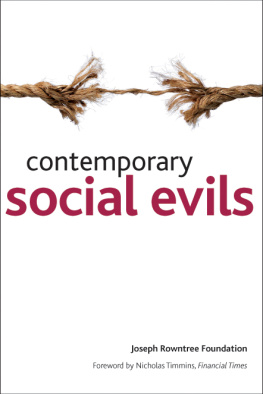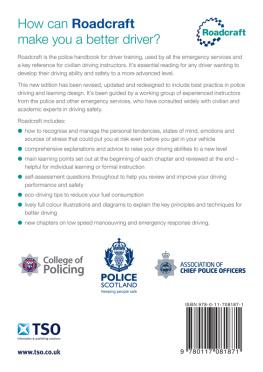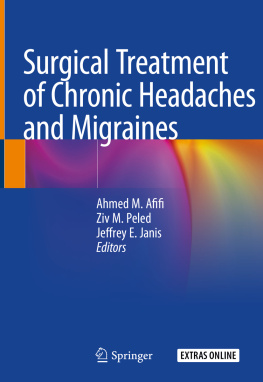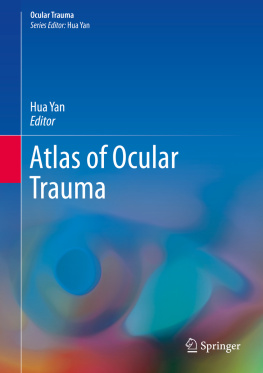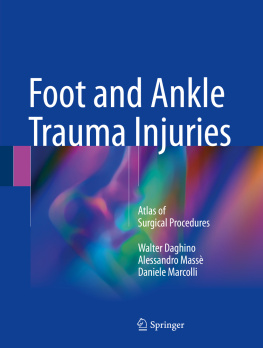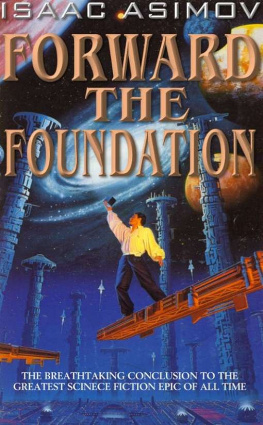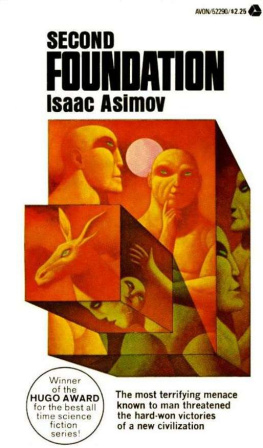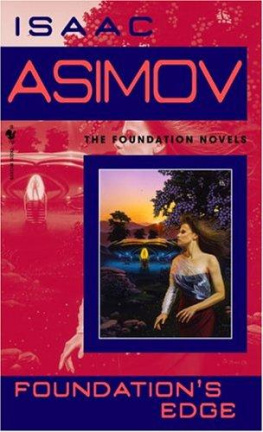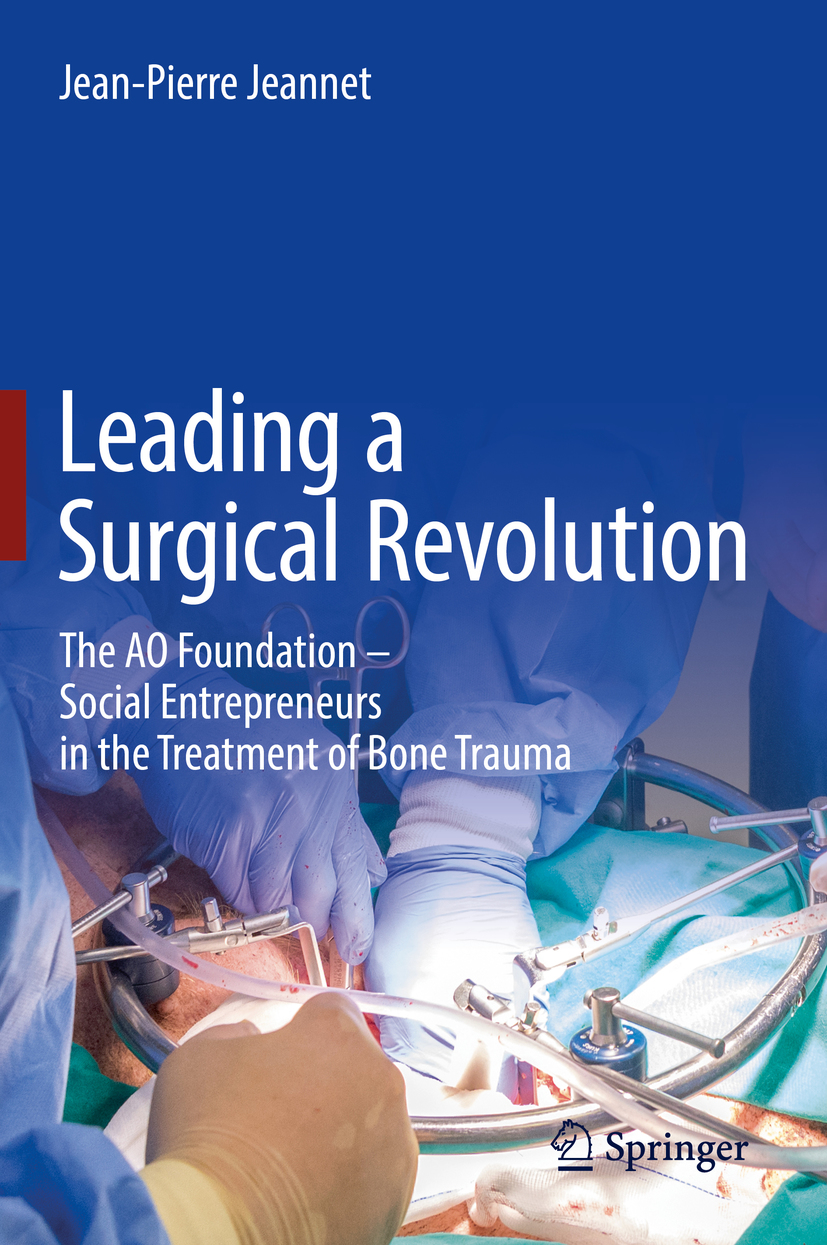Jean-Pierre Jeannet
Leading a Surgical Revolution The AO Foundation Social Entrepreneurs in the Treatment of Bone Trauma
Jean-Pierre Jeannet
Professor Emeritus Babson College, Wellesley, MA, USA
Professor Emeritus IMD Institute, Lausanne, Switzerland
ISBN 978-3-030-01979-2 e-ISBN 978-3-030-01980-8
https://doi.org/10.1007/978-3-030-01980-8
Library of Congress Control Number: 2018959613
Springer Nature Switzerland AG 2019
This work is subject to copyright. All rights are reserved by the Publisher, whether the whole or part of the material is concerned, specifically the rights of translation, reprinting, reuse of illustrations, recitation, broadcasting, reproduction on microfilms or in any other physical way, and transmission or information storage and retrieval, electronic adaptation, computer software, or by similar or dissimilar methodology now known or hereafter developed.
The use of general descriptive names, registered names, trademarks, service marks, etc. in this publication does not imply, even in the absence of a specific statement, that such names are exempt from the relevant protective laws and regulations and therefore free for general use.
The publisher, the authors and the editors are safe to assume that the advice and information in this book are believed to be true and accurate at the date of publication. Neither the publisher nor the authors or the editors give a warranty, express or implied, with respect to the material contained herein or for any errors or omissions that may have been made. The publisher remains neutral with regard to jurisdictional claims in published maps and institutional affiliations.
This Springer imprint is published by the registered company Springer Nature Switzerland AG
The registered company address is: Gewerbestrasse 11, 6330 Cham, Switzerland
Foreword
The title of this book reflects, in a few lines, the essence of the AO Foundation and what it stands for. With the invention of a disruptive surgical procedure it revolutionized the world of trauma, reducing pain and disabilities of patients with broken bones and bringing them back into normal social and working life within days, instead of months. In the process, it saved the worlds health system billions of dollarsa dream of todays health experts confronting escalating health costs. Practically unnoticed, a worldwide medical device industry developed around this surgical procedure and its surgical instruments and implantsalso developed by the pioneer AO surgeons together with a small-scale industry. The social entrepreneurship of a nonprofit organization with changing industrial partners leveraged the dissemination globally on an unprecedented scale.
The idea to present this extraordinary story came out of a research project of Professor Jeannet who identified exceptional success stories of small and medium-sized Swiss enterprises, among them Synthes and Mathys, only to realize the interconnection and further develop the story into a separate book detailing the role of the AO Foundation in this success story.
In todays world, with healthcare costs exploding, a similar approach combining disruptive inventions and innovations with a cost-effective organization might offer ideas for other successful partnerships or private initiatives to remedy illnesses.
The AO Foundation continues to extend its successful work into low-income countries where the burden from injuries and disabilities has assumed epidemic proportions and where treatment methods and care are largely comparable to what the pioneering AO surgeons were confronted with 60 years ago in Switzerland.
The 60th anniversary of the AO Foundation is an appropriate moment to present its history. This book by Professor Jeannet describes the AO history in a comprehensive way, with special attention to the business aspects, making it of interest also for a broader, nonmedical, public.
Nikolaus Renner
Rolf Jeker
Preface
This book project came my way when I was looking for support for a different, but related, project on Swiss small and medium-sized exporting companies (SMEs) with global success in specific niches. I planned to include Mathys, Straumann, and Medartis, all companies with strong connections to the AO Foundation. However, the AO indicated that they would rather welcome a book on the AO itself with a particular emphasis on its industrial impact. Would I be interested? The AO assured that I would have complete independence as to the approach I would choose. Initially, I hesitated to entertain the idea, since I possess neither a medical nor an engineering background.
My background as a business school faculty member, however, was of interest to the AO leaders since previous books had been written largely by surgeons or medical historians. And so it came that I, with only a cursory acquaintance of the AO, accepted to tackle the challenge of writing a book that would give special emphasis to the AO industrial achievements and impact. My contacts at the AO Foundation board convinced me that my lack of medical training did not disqualify me from writing about the AO and its 60-year history. The readers of this book will have to be the final judges of this decision.
I approached the project in line with my business case research experience gained from writing scores of cases at IMD (Lausanne) and Babson College (Wellesley, MA, USA). This meant that I did not immerse myself only into the archives of the AO, but instead focused on a large number of in-depth interviews with many individuals who had been associated with this enterprise since its inception. While delving into memories about past events, it was to be expected that there would be conflicting perceptions of the what and why of events. Naturally, I made full use of the publications written previously, some of which were crucial to creating the story line I wanted to build, and some helped deal with conflicting memories from interview partners.
As I got ever deeper involved in the AO history, I came to realize that I should not only write a book covering the period since 2002, the year the last book was published. Instead, I needed to tell the entire history of the AO from its inception using the particular lenses that came from my business school faculty background. At first, this meant creating a timeline of the 60 years of the AO and identifying the critical points in its development, be it medical, engineering, or business-related.
Delving deeper, I saw that there was both a social entrepreneurship story centered around the medical aspects of the AOs achievements, as well as a business entrepreneurship story that focused on the industrial achievements triggered by the AO and its purpose. Identifying the two types of entrepreneurial endeavors, social and business, allowed me to approach the AO history from two different angles while using the conceptual lenses from my business school experience for labeling the key events. These business lenses were at the origin of many of the chapter titles and subtitles. Many of these concepts, part of the modern business vocabulary, did not exist when the AO was started. Throughout the text, I have taken the liberty to point out the organizational and business achievements from earlier periods without the access to a technical infrastructure we take for granted in todays business environment.

